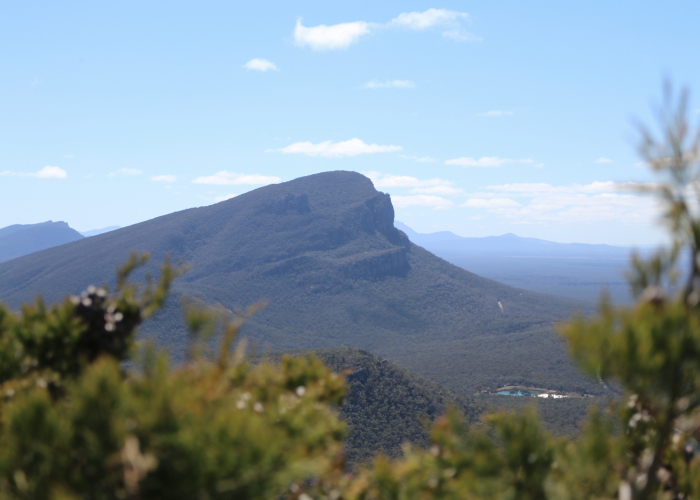Overview
Hidden deep within Tasmania’s remote Southwest National Park, the Federation Peak Trek is one of Australia’s most legendary and challenging wilderness hikes. Rising to 1,224 meters, Federation Peak commands dramatic views over rugged mountains, ancient rainforests, and glacial valleys. Federation Peak Trek (Tasmania), Tour & Trek.
Known as the “most fearsome mountain in Australia,” this trek attracts seasoned adventurers seeking an authentic wilderness experience. The route weaves through dense myrtle forests, alpine moorlands, and exposed ridgelines, culminating in a heart-pounding final ascent to the summit.
While it’s not for beginners, Federation Peak rewards trekkers with unparalleled solitude, untouched natural beauty, and a profound sense of achievement. For those drawn to the wild, this trek represents the pure essence of Tasmania’s untamed spirit.
Best Time to Visit
Weather in Tasmania’s southwest can be unpredictable year-round, but the best time to attempt the Federation Peak Trek is between December and April.
- Summer (Dec–Feb): Longer daylight hours and milder temperatures make this the ideal season.
- Autumn (Mar–Apr): Clear skies and stable conditions, though cooler nights.
- Winter (Jun–Aug): Not recommended due to heavy rain, snow, and slippery terrain.
Even during peak months, trekkers should be prepared for sudden weather changes — fog, high winds, or heavy rainfall are common in the region.
How to Reach
Reaching Federation Peak requires careful planning, as it lies in one of Tasmania’s most isolated regions.
- By Air: The nearest major airport is Hobart International Airport. From there, it’s about a 3.5-hour drive to the trailheads near Geeveston or Scotts Peak Dam.
- By Road: Rent a vehicle from Hobart and follow directions via Huon Highway (A6) to reach the trail access points. The final sections may be on unsealed roads.
- By Public Transport: There is limited bus service to southern Tasmania, but reaching the park generally requires private transport or a guided group transfer.
Popular access routes include:
- Farmhouse Creek Track (traditional approach)
- Huon Track (alternative route)
Both options lead through thick rainforest before joining the main route to Federation Peak.
Entry Fees and Permits
Federation Peak lies within the Tasmanian Wilderness World Heritage Area, so all trekkers must obtain a Tasmania Parks Pass.
- Approximate Cost: Around AUD 40–60 per person for a multi-day pass (subject to change).
- Permits: Required for overnight camping. Booking in advance is advised, especially during summer.
- Group Size: Recommended to be small to minimize environmental impact.
Always check the latest regulations from the Tasmania Parks and Wildlife Service before starting your trek.
Food Availability and Meal Options
Due to the trek’s remote nature, no food facilities or shops exist along the route. Hikers must carry all food and cooking supplies for the entire journey. Federation Peak Trek (Tasmania), Tour & Trek.
Suggested food items:
- Lightweight, high-calorie dehydrated meals
- Energy bars, nuts, and trail mix
- Instant noodles or rice packs
- Powdered soups or drink mixes
- Tea or coffee sachets
If you’re part of an organized expedition, meals may be provided, but independent trekkers should plan for 6–8 days of supplies. Always pack extra for emergencies.
Packing List and Essentials
Because of the trek’s difficulty and remoteness, packing smart is vital.
Essential Gear:
- Waterproof hiking boots (ankle support required)
- Sturdy backpack (60–70L capacity)
- Weatherproof tent and sleeping bag (rated for alpine conditions)
- Thermal base layers and warm clothing
- Rain jacket and waterproof pants
- Gloves, beanie, and sun protection gear
- Cooking stove, gas canisters, and lightweight utensils
- Headlamp with spare batteries
- Map, compass, or GPS device
- First aid kit and personal medications
- Water purification tablets or filter
- Trekking poles for steep sections
Optional but recommended:
- Satellite phone or personal locator beacon (PLB)
- Extra dry bags for waterproofing gear
- Camera or lightweight binoculars
Pack for wet, muddy, and unpredictable weather — Tasmania’s southwest is known for heavy rainfall even in summer.
Safety Tips and Local Regulations
The Federation Peak Trek is often described as Australia’s toughest bushwalk, and safety must be your top priority.
Safety Tips:
- Attempt this trek only if you have previous multi-day wilderness experience.
- Always check weather forecasts before departure.
- Carry a Personal Locator Beacon (PLB) — phone reception is unreliable.
- Inform someone of your travel route and expected return.
- Avoid climbing the summit in wet or windy conditions — the final section is extremely exposed.
- Be prepared for river crossings and slippery rock faces.
Local Regulations:
- Camp only in designated areas.
- Fires are generally prohibited; use gas stoves instead.
- Leave no trace — carry all waste out.
- Respect fragile alpine vegetation.
- Follow all park signage and safety advisories.
Tasmania’s rescue services are limited in remote regions; self-sufficiency and caution are essential. Federation Peak Trek (Tasmania), Tour & Trek.
Tips for Beginners or First-Time Visitors
Federation Peak is not recommended for beginners, but if you’re determined to attempt it, here are some tips to help you prepare:
- Train with smaller multi-day hikes like the Overland Track or Frenchmans Cap first.
- Build endurance and leg strength before your trip.
- Learn basic navigation and survival skills.
- Travel with a group or experienced guide.
- Start early each day to make use of daylight.
- Keep your backpack as light as possible.
- Don’t rush — weather delays are common.
If conditions turn bad, don’t hesitate to turn back. The mountain will always be there for another attempt.
Local Customs or Cultural Etiquette
Federation Peak and the surrounding wilderness hold deep significance for Tasmania’s Aboriginal communities, particularly the Palawa people. Respect for the land and its history is a vital part of the trekking experience.
Cultural Etiquette:
- Avoid disturbing natural features or historical artifacts.
- Stay on marked paths to prevent erosion.
- Respect quiet and solitude — this is a sacred landscape.
- Observe wildlife from a distance.
Learning about Tasmania’s Aboriginal heritage adds a meaningful layer to the journey, connecting modern adventurers to the island’s ancient cultural roots.
Frequently Asked Questions (FAQs)
1. How long is the Federation Peak Trek?
The trek typically takes 6 to 8 days, depending on route and weather conditions.
2. What is the difficulty level?
It’s considered very difficult, requiring fitness, experience, and preparation.
3. What is the altitude of Federation Peak?
The summit stands at 1,224 meters (4,016 ft) above sea level.
4. Are there restrooms along the trek?
No. Trekkers must follow wilderness hygiene practices and use portable toilet kits where required.
5. Do I need a guide?
Experienced hikers can go independently, but hiring a guide is highly recommended for safety and navigation.
6. Is camping allowed?
Yes, camping is permitted at designated sites. Always follow park guidelines.
7. Can I swim in lakes or rivers along the trail?
Yes, but only if conditions are safe. Water can be extremely cold year-round.
8. Is wildlife a concern?
You may encounter wallabies, possums, and native birds. Snakes are rare but possible — stay alert and avoid tall grass.
9. What kind of weather should I expect?
Expect cold nights, frequent rain, and sudden weather shifts, even in summer.
10. What makes Federation Peak special?
Its sheer isolation, steep summit, and raw wilderness make it one of Australia’s most challenging and rewarding treks.
Final Thoughts
The Federation Peak Trek isn’t just a hike — it’s an expedition into one of Earth’s last true wilderness areas. It demands strength, resilience, and respect for nature, but it rewards trekkers with breathtaking views and an experience few ever achieve.






Leave a Reply